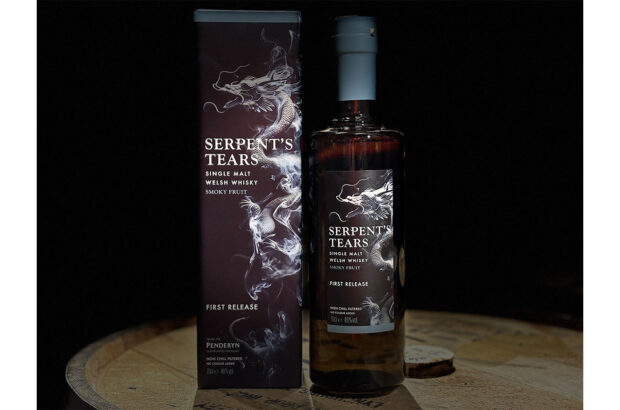Côtes de Provence boasts pretty landscapes and pretty rosés. But can it push the boat out and make serious wine? JOHN DOWNES MW finds out
The spirit of Cézanne and his impressionist mates still influences Provence, where their colours, as bright as ever, are splashed across the vivid landscape. Over a century later, the talk is of an altogether different palette, though no less colourful. As the region strives for an improved image for its wines, red, white and rosé wines are wrestling for supremacy. Rosé and red wines are now caught in a fascinating battle.
According to some, the battle is already over. ‘Our research shows that dry rosé is the way to put Provence on the map,’ says Anne-Sophie Carlin of the Comité Interprofessionel des Vins de Côtes de Provence. But although rosé wine accounts for 75% of Provençal production compared to red’s 20%, it is via its red wine that the region needs to promote itself. Provence rosés are unbeatable but, as Domaine Rabiega’s winemaker Lars Tort argues, ‘if a region bases its reputation on rosé, nobody can take it seriously’. The question is, do the region’s winemakers have the courage to change their ways?
The raw materials are there. ‘Our soils are like the southern Rhône and our climate resembles Tuscany,’ says Alain Depeursinge, owner of Domaine de la Cressonnière. The vineyards are tended by winemakers who drive down yields in search of quality and concentration. ‘The AC law may state a maximum of 55hl/ha (hectolitres/ hectares) but we pick at 40 hl/ha for our estate reds and 35 hl/ha for our reserve reds,’ says Domaine Rimauresq’s Pierre Dufford.
‘For our Mourvèdre, Syrah and Carignan-blended Reserve Grand Cuvée, we yield Carrignan at just 20 hl/ha,’ explains François Combard of Domaine Saint André de Figuière. ‘This proves that this high-yielding variety can produce exceptional wines when strictly controlled.’
Provence’s low-yield mentality is to be applauded. And it is not the only testament to professionalism. At Le Grand Cros in the foothills of the Massif des Maures, winemaker Julian Faulkner has carried out extensive tests to produce the best possible fruit. ‘In our cooler microclimate I calibrated the capillary action and moisture content of our clay soils and found we needed vines trained to a height of 2.30m. The vines need stress and must be balanced with the water availability,’ he concludes.
Furthermore, Côtes de Provence shares a cru classé system with Bordeaux which started back in 1955 when 18 great growths were chosen. The appellation for the region was only granted in 1975.
There are now 14 members of the cru classé Club – Château de Bregançon, du Galoupet, de Mauvanne, Minuty, Roubine, Sainte Marguerite, de Saint Martin, Saint Maur, Sainte Roseline, de Salle, Domaines du Jas D’Esclans and de Rimauresq, with Clos Cibonne and Clos Mirielle completing the elite list.
The members meet regularly to exchange views. ‘We have developed a genuine cru classé, keeping local winemaking traditions and expertise, and promoting our wines,’ says Château Ste-Roseline’s Jean-Paul Daumas.
It’s possible that the success of the cru classé Club has stirred the powers that be to revisit the region’s appellation laws, for new rules are under discussion. ‘It will probably result in a “triangular system” with AC Côtes de Provence wines at the wide base, Villages wines taking the middle sector and cru wines sitting at the top,’ says Jean-Jacques Benetti, director of the impressive Maison du Vin Côtes de Provence at Les Arcs. Whether the existing cru classé system will survive is also up for discussion.
For the moment, though, Provençal varieties are strictly controlled. But the appellation laws read like a Who’s Who of southern French grapes. The red and rosé list includes Grenache, Syrah, Mourvèdre, Cinsault, Tibouren and Carignan while Rolle, Clairette and Ugni Blanc are the main white players. ‘We grow 13 different varieties at Château Roubine, the traditional varieties being boosted by Cabernet Sauvignon, Merlot and Semillon,’ says owner Valerie Riboud.
By comparison, Matthieu de Wolf, owner of Domaine du Jas d’Esclans, used just three varieties – Grenache (40%), Syrah (40%) and Cinsault (20%). in his 2002. ‘We look for mouthfeel and aroma, and this combination gave the suppleness and the pronounced red fruit notes we aim for,’ he reveals.
When it comes to white grape varieties, few claim that Provence grows classics, but there’s no shortage of support for the little-known Rolle. ‘Rolle responds well to our schist-quartz soils and gives good acidity, elegance and an attractive mineral edge,’ boasts François Combard of St-André de Figière, where the grape is used to produce Chablis de Sud.
SPIRIT OF COOPERATION
Talk only of the 400 single producers paints a false picture of Provence, for 47 cooperatives also play a leading role in the success in the 120-million-bottle-a-year production. The cooperative Les Maitres Vignerons de St-Tropez was formed in 1964 by nine growers from the peninsula, and is typical.
‘The members are all motivated by a common passion for vine and wine but to maintain individuality each grower vinifies their wines separately,’ explains administrator Liz Comte Monk.
The winemakers here take their rosé seriously, oak-fermenting and barrel-ageing. ‘We mature all our wines in oak and we barrel ferment our Mas Negrel Cadenet Prestige Rosé, and employ batonnage,’ says owner Guy Negrel. Some recommend rosé is cellar aged. ‘Our full-bodied rosé ages beautifully,’ adds Cressoniere’s Alain Depeursinge.
French oak 225-litre barriques now dominate the cellars in Provence, with the traditional, large, old oak vats used just for blending. ‘We use 600 litre barrels for our reds, as barriques give very oaky tastes that don’t suit our wines,’ says Pierre Duffort of Rimauresq.
Wines such as Miraval’s – notably its top of the range Natouchka 2001 (90% Syrah) – exude authority, the ingredient Provence needs if it is to be taken seriously on the global market. The hot 2003 summer, which meant an early start to the harvest in wonderful conditions, should help. ‘We anticipate a class vintage of excellent quality but lower quantity,’ notes winemaker Emmanuel Gaujal.
With a decent vintage in its armoury, Côtes de Provence producers have the ammunition to join battle with the country’s more established wine regions. But they should check first to see how many rosés feature at such dizzy heights. Or better still, ask Cézanne – he knew exactly what colours show Provence at its best.
John Downes MW is a freelance writer and broadcaster
Written by JOHN DOWNES






